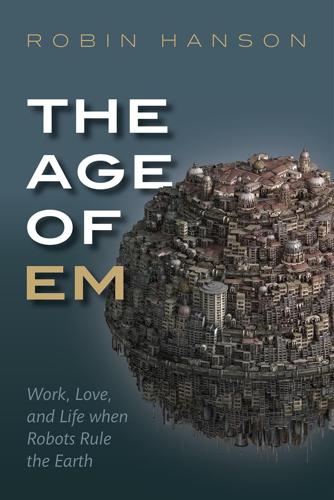
The Age of Em: Work, Love and Life When Robots Rule the Earth
by
Robin Hanson
Published 31 Mar 2016
While there has been no slowing in the fall of the average energy used per computation (Koomey and Naffziger 2015), processor speed gains slowed recently, and plans for many-layered chips suggest further difficulties roughly a decade from now. In addition, it seems that gains will slow even further around 2035, when computer chips must be redesigned to enable reversible computing. (Reversible computing is discussed in Chapter 6, Entropy section.) With reversible computing, gains in making parts smaller, faster, and cheaper have to be split between supporting more operations and running each operation more slowly to use less energy. Because of this, the cost per operation may only fall roughly half as fast as it otherwise would have fallen.
…
This is a reason why we might expect Moore’s law growth rates for active devices (not memory) to slow down by about a factor of two after around 2035 when nearly adiabatic reversible computing becomes important. Historically, the price of energy and cooling has fallen much slower than has the price of computer hardware. It might seem that when cooling is a major issue, computer hardware runs at as hot a temperature as feasible, as the rate at which heat is transferred via conduction is proportional to a local temperature difference. However, for adiabatic reversible computer hardware, the rate at which heat is generated is also roughly proportional to temperature, as it is determined fundamentally by the rate of bit erasure (also known as entropy production).
…
As there are roughly 1000 synapses per neuron on average, that is over a million bits erased per synapse per minimum neuron reaction time. Unless brain synapses are somehow doing the equivalent of a million logical operations per reaction time, the vast majority of the brain’s bit erasure must be non-logical. This suggests that human speed ems built on reversible computer hardware require far less than 20 watts of power. Another hint that most future computers will likely be miserly with energy is that the Earth has far more material to convert into computers than it has energy to run such computers at maximal rates. For example, by one plausible calculation of the typical energy consumption in a maximum-output nanotech-based machine (~10 watts per cubic centimeter), all of the light energy reaching Earth from the sun could be used by a single city of nanotech hardware 100 meters (~33 stories) tall and 10 kilometers on each side (Freitas 1999).

Quantum Computing for Everyone
by
Chris Bernhardt
Published 19 Mar 2019
Artur Ekert realized that the setup for the test of Bell’s inequality could also be used both to generate a secure key to be used for cryptography and at the same time to test whether any eavesdroppers are present. We conclude the chapter with a description of this cryptographic protocol. Chapter 6. The chapter starts with standard topics in computation: bits, gates, and logic. Then we briefly look at reversible computation and the ideas of Ed Fredkin. We show that both the Fredkin gate and the Toffoli gate are universal—you can build a complete computer using only Fredkin gates (or Toffoli gates). The chapter concludes with Fredkin’s billiard-ball computer. This is not really needed for the rest of our story, but its sheer ingenuity demands that it be included.
…
These lectures were eventually written up as Feynman Lectures on Computation. Feynman’s interest in computation was partly due to his interaction with Edward Fredkin and Fredkin’s idiosyncratic views of physics and computation. Fredkin believes that the universe is a computer, and that since the laws of physics are reversible we ought to study reversible computation and reversible gates. But even though Fredkin’s overarching thesis is not widely accepted in the physics community, he is recognized for having some brilliant and unconventional ideas. One of these is the billiard ball computer. Feynman’s book includes a discussion of reversible gates and shows how any computation can be performed by bouncing balls off one another.
…
We won’t describe how to implement these, but we will end by commenting that once we start using feedback it is important to get the timing of inputs and outputs exactly right. This is where the clock comes in, sending pulses of electricity at constant time intervals. Figure 6.11 A flip-flop using two NAND gates. Reversible Computation Now that we have given some idea of how a computer can be built from classical gates, we begin our study of reversible gates. Gates can be considered as boolean functions. For example, the AND gate takes two boolean inputs and gives a boolean output. Often the easiest way of representing this is through a table.

The Singularity Is Near: When Humans Transcend Biology
by
Ray Kurzweil
Published 14 Jul 2005
Even at 1042 cps, a 2.2-pound "ultimate portable computer" would be able to perform the equivalent of all human thought over the last ten thousand years (assumed at ten billion human brains for ten thousand years) in ten microseconds.64 If we examine the "Exponential Growth of Computing" chart (p. 70), we see that this amount of computing is estimated to be available for one thousand dollars by 2080. A more conservative but compelling design for a massively parallel, reversible computer is Eric Drexler's patented nanocomputer design, which is entirely mechanical.65 Computations are performed by manipulating nanoscale rods, which are effectively spring-loaded. After each calculation, the rods containing intermediate values return to their original positions, thereby implementing the reverse computation. The device has a trillion (1012) processors and provides an overall rate of 1021 cps, enough to simulate one hundred thousand human brains in a cubic centimeter.
…
Because of nanotechnology's ability to manipulate matter and energy at the extremely fine scale of atoms and molecular fragments, the efficiency of using energy will be far greater, which will translate into lower energy requirements. Over the next several decades computing will make the transition to reversible computing. (See "The Limits of Computation" in chapter 3.) As I discussed, the primary energy need for computing with reversible logic gates is to correct occasional errors from quantum and thermal effects. As a result reversible computing has the potential to cut energy needs by as much as a factor of a billion, compared to nonreversible computing. Moreover, the logic gates and memory bits will be smaller, by at least a factor of ten in each dimension, reducing energy requirements by another thousand.
…
Self-Assembly. Emulating Biology. Computing with DNA. Computing with Spin. Computing with Light. Quantum Computing. The Computational Capacity of the Human Brain 113 Accelerating the Availability of Human-Level Personal Computing. Human Memory Capacity. The Limits of Computation 116 Reversible Computing. How Smart Is a Rock? The Limits of Nanocomputing. Setting a Date for the Singularity. Memory and Computational Efficiency: A Rock Versus a Human Brain. Going Beyond the Ultimate: Pico- and Femtotechnology and Bending the Speed of Light. Going Back in Time. CHAPTER FOUR Achieving the Software of Human Intelligence: How to Reverse Engineer the Human Brain 127 Reverse Engineering the Brain: An Overview of the Task 127 New Brain-Imaging and Modeling Tools.

The Logician and the Engineer: How George Boole and Claude Shannon Created the Information Age
by
Paul J. Nahin
Published 27 Oct 2012
A final observation: an important property of the Fredkin gate, a property not shared by the Toffoli gate, is the preservation of parity. That is, the outputs of a Fredkin gate always have the same number of 1s and 0s as do the inputs.6 10.4 THERMODYNAMICS OF LOGIC The reason for our interest in logically reversible computation becomes clear once we ask the following question: for the logically irreversible gates, where does the destroyed information “go”? It appears as heat! An implicit recognition of this can be found as long ago as 1929, in an important thermodynamics paper by the Hungarian physicist Leo Szilard (1898–1964).7 The explicit tying together of information, energy, and computation in analysts’ minds is, however, almost certainly due to a remark made by the Institute for Advanced Study mathematician John von Neumann (1903–1957) in a December 1949 lecture at the University of Illinois.8 In that lecture he asserted that the minimum energy Emin associated with manipulating a bit to be kT ln(2) joules (J), where T is the temperature on the Kelvin scale and k is Boltzmann’s constant (k = 1.38. 10−23).9 (Power is energy per unit time and so, just to keep the scale of this in mind, 1 = 1 = 1 watt) At “room temperature,” that is, at T = 300 K, this minimum energy is 2.87 · 10−21 J, a very tiny amount of energy.
…
An implicit recognition of this can be found as long ago as 1929, in an important thermodynamics paper by the Hungarian physicist Leo Szilard (1898–1964).7 The explicit tying together of information, energy, and computation in analysts’ minds is, however, almost certainly due to a remark made by the Institute for Advanced Study mathematician John von Neumann (1903–1957) in a December 1949 lecture at the University of Illinois.8 In that lecture he asserted that the minimum energy Emin associated with manipulating a bit to be kT ln(2) joules (J), where T is the temperature on the Kelvin scale and k is Boltzmann’s constant (k = 1.38. 10−23).9 (Power is energy per unit time and so, just to keep the scale of this in mind, 1 = 1 = 1 watt) At “room temperature,” that is, at T = 300 K, this minimum energy is 2.87 · 10−21 J, a very tiny amount of energy. As a comparison, every time one of the neurons in your brain “fires” (see the “majority logic” discussion in Chapter 6), the energy involved is a hundred billion (1011) times larger than von Neumann’s Emin!10 The existence of logically reversible computation, which doesn’t destroy information and so avoids the fundamental cause of heat, makes it plausible that it might be possible to build computers that could operate below von Neumann’s Emin. This is of great practical interest because, while Emin may be very tiny, in a modern VLSI (Very Large-Scale Integrated) computer circuit chip running at a high clock rate, the amount of heat energy produced can result in substantial power levels.
…
Babbage actually built neither one, but versions of the difference engine were constructed later by others. The design of mechanical computers can actually be traced back hundreds of years before Baggage: see Herman H. Goldstein, The Computer from Pascal to von Neumann, Princeton University Press, 1972. 4. Charles H. Bennett, “Notes on the History of Reversible Computation,” IBM Journal of Research and Development, January 1988, pp. 16–23. 5. Charles H. Bennett and Rolf Landauer, “The Fundamental Limits of Computation,” Scientific American, July 1985, pp. 48–56. The opening quotation to this chapter comes from this paper. 6. In Feynman Lectures on Computation (edited by A.J.G.
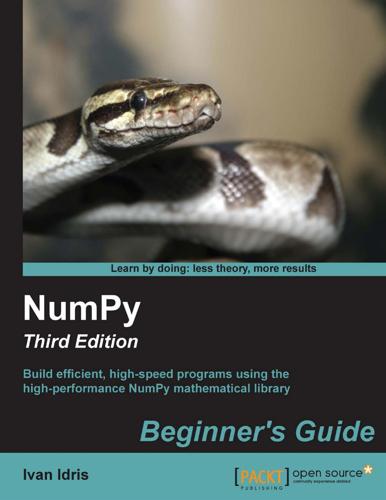
Numpy Beginner's Guide - Third Edition
by
Ivan Idris
Published 23 Jun 2015
This functon mirrors the fv() functon and requires the interest rate, number of periods, and the periodic payment as well, but here we start with the future value. Read more about the present value at http://en.wikipedia.org/wiki/Present_ value . It should be easy to derive the formula for the present value from the formula for the future value, if you want. Let's reverse compute the present value with the numbers from the Time for acton – determining the future value secton: Plug in the fgures from the Time for acton – determining the future value secton: print("Present value", np.pv(0.03/4, 5 * 4, -10, 1376.09633204)) This gives us 1000 as expected apart from a tny numerical error.
…
The number of payments returned was 167 . Interest rate The NumPy rate() functon calculates the interest rate given the number of periodic payments, the payment amount or amounts, the present value, and the future value. Let's take the values from the Time for acton – determining the number of periodic payments secton and reverse compute the interest rate from the other parameters. Fill in the numbers from the previous Time for acton secton: print("Interest rate", 12 * np.rate(167, -100, 9000, 0)) The interest rate is approximately 10 percent as expected: Interest rate 0.0999756420664 What just happened? We used the NumPy rate() functon and the values from the Time for acton – determining the number of periodic payments secton to compute the interest rate of the loan.
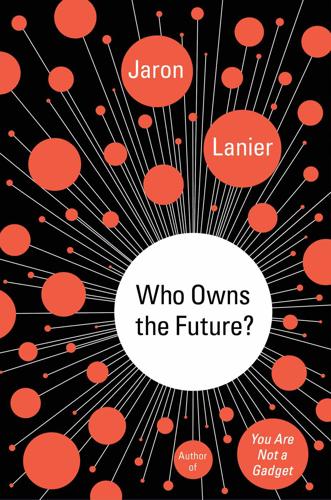
Who Owns the Future?
by
Jaron Lanier
Published 6 May 2013
But in order for a computer to run, the surrounding parts of the universe must take on the waste heat, the randomness. You can create a local shield against entropy, but your neighbors will always pay for it.* *A rare experimental machine called a “reversible” computer never forgets, so that any computation can be run backward as well as forward. Such devices run cool! This is an example of how thermodynamics and computation interact. Reversible computers don’t radiate as much heat; forgetting radiates randomness, which is the same thing as heating up the neighborhood. There is a fundamental problem with transposing that plan to economics: A marketplace is a system of competing players, each of whom would ideally be working from a different, but not an a priori better or worse, information position.
…
M., 129–30, 261, 328 “Forum,” 214 Foucault, Michel, 308n 4chan, 335 4′33″ (Cage), 212 fractional reserve system, 33 Franco, Francisco, 159–60 freedom, 13–15, 32–33, 90–92, 277–78, 336 freelancing, 253–54 Free Print Shop, 228 “free rise,” 182–89, 355 free speech, 223, 225 free will, 166–68 “friction,” 179, 225, 230, 235, 354 Friendster, 180, 181 Fukuyama, Francis, 165, 189 fundamentalism, 131, 193–94 future: chaos in, 165–66, 273n, 331 economic analysis of, 1–3, 15, 22, 37, 38, 40–41, 42, 67, 122, 143, 148–52, 153, 155–56, 204, 208, 209, 236, 259, 274, 288, 298–99, 311, 362n, 363 humanistic economy for, 194, 209, 233–351 361–367 “humors” of, 124–40, 230 modern conception of, 123–40, 193–94, 255 natural basis of, 125, 127, 128–29 optimism about, 32–35, 45, 130, 138–40, 218, 230n, 295 politics of, 13–18, 22–25, 85, 122, 124–26, 128, 134–37, 199–234, 295–96, 342 technological trends in, 7–18, 21, 53–54, 60–61, 66–67, 85–86, 87, 97–98, 129–38, 157–58, 182, 188–90, 193–96, 217 utopian conception of, 13–18, 21, 30, 31, 37–38, 45–46, 96, 128, 130, 167, 205, 207, 265, 267, 270, 283, 290, 291, 308–9, 316 future-oriented money, 32–34, 35 Gadget, 186 Gallant, Jack, 111–12 games, 362, 363 Gates, Bill, 93 Gattaca, 130 Gawker, 118n Gelernter, David, 313 “general” machines, 158 General Motors, 56–57 general relativity theory, 167n Generation X, 346 genetic engineering, 130 genetics, 109–10, 130, 131, 146–47, 329, 366 genomics, 109–10, 146–47, 366 Germany, 45 Ghostery, 109 ghost suburbs, 296 Gibson, William, 137, 309 Gizmodo, 117–18 Global Business Network (GBN), 214–15 global climate change, 17, 32, 53, 132, 133, 134, 203, 266, 295, 296–97, 301–2, 331 global economy, 33n, 153–56, 173, 201, 214–15, 280 global village, 201 God, 29, 30–31, 139 Golden Goblet, 121, 121, 175, 328 golden rule, 335–36 gold standard, 34 Google, 14, 15, 19, 69, 74, 75–76, 90, 94, 106, 110, 120, 128, 153, 154, 170, 171, 174, 176, 180, 181–82, 188, 191, 192, 193, 199–200, 201, 209, 210, 217, 225, 227, 246, 249, 265, 267, 272, 278, 280, 286, 305n, 307, 309–10, 322, 325, 330, 344, 348, 352 Google Goggles, 309–10 Googleplex, 199–200 goops, 85–89, 99 Gore, Al, 80n Graeber, David, 30n granularity, 277 graph-shaped networks, 241, 242–43 Great Britain, 200 Great Depression, 69–70, 75, 135, 299 Great Recession, 31, 54, 60, 76–77, 204, 311, 336–37 Greece, 22–25, 45, 125 Grigorov, Mario, 267 guitars, 154 guns, 310–11 Gurdjieff, George, 215, 216 gurus, 211–13 hackers, 14, 82, 265, 306–7, 345–46 Hardin, Garrett, 66n Hartmann, Thom, 33n Hayek, Friedrich, 204 health care, 66–67, 95, 98–99, 100, 132–33, 153–54, 249, 253, 258, 337, 346 health insurance, 66–67, 95, 98–99, 100, 153–54 Hearts and Minds, 353n heart surgery, 11–13, 17, 18, 157–58 heat, 56 hedge funds, 69, 106, 137 Hephaestus, 22, 23 high-dimensional problems, 145 high-frequency trading, 56, 76–78, 154 highways, 79–80, 345 Hinduism, 214 Hippocrates, 124n Hiroshima bombing (1945), 127 Hollywood, 204, 206, 242 holographic radiation, 11 Homebrew Club, 228 homelessness, 151 homeopathy, 131–32 Homer, 23, 55 Honan, Mat, 82 housing market, 33, 46, 49–52, 61, 78, 95–96, 99, 193, 224, 227, 239, 245, 255, 274n, 289n, 296, 298, 300, 301 HTML, 227, 230 Huffington Post, 176, 180, 189 human agency, 8–21, 50–52, 85, 88, 91, 124–40, 144, 165–66, 175–78, 191–92, 193, 217, 253–64, 274–75, 283–85, 305–6, 328, 341–51, 358–60, 361, 362, 365–67 humanistic information economy, 194, 209, 233–351 361–367 human reproduction, 131 humors (tropes), 124–40, 157, 170, 230 hunter-gatherer societies, 131, 261–62 hyperefficient markets, 39, 42–43 hypermedia, 224–30, 245 hyper-unemployment, 7–8 hypotheses, 113, 128, 151 IBM, 191 identity, 14–15, 82, 124, 173–74, 175, 248–51, 283–90, 305, 306, 307, 315–16, 319–21 identity theft, 82, 315–16 illusions, 55, 110n, 120–21, 135, 154–56, 195, 257 immigration, 91, 97, 346 immortality, 193, 218, 253, 263–64, 325–31, 367 imports, 70 income levels, 10, 46–47, 50–54, 152, 178, 270–71, 287–88, 291–94, 338–39, 365 incrementalism, 239–40 indentured servitude, 33n, 158 India, 54, 211–13 industrialization, 49, 83, 85–89, 123, 132, 154, 343 infant mortality rates, 17, 134 infinity, 55–56 inflation, 32, 33–34 information: age of, 15–17, 42, 166, 241 ambiguity of, 41, 53–54, 155–56 asymmetry of, 54–55, 61–66, 118, 188, 203, 246–48, 285–88, 291–92, 310 behavior influenced by, 32, 121, 131, 173–74, 286–87 collection of, 61–62, 108–9 context of, 143–44, 178, 188–89, 223–24, 225, 245–46, 247, 248–51, 338, 356–57, 360 correlations in, 75–76, 114–15, 192, 274–75 for decision-making, 63–64, 184, 266, 269–75, 284n digital networks for, see digital networks duplication of, 50–52, 61, 74, 78, 88, 223–30, 239–40, 253–64, 277, 317–24, 335, 349 economic impact of, 1–3, 8–9, 15–17, 18, 19–20, 21, 35, 60–61, 92–97, 118, 185, 188, 201, 207, 209, 241–43, 245–46, 246–48, 256–58, 263, 283–87, 291–303, 331, 361–67 in education, 92–97 encrypted, 14–15, 175, 239–40, 305–8, 345 false, 119–21, 186, 275n, 287–88, 299–300 filters for, 119–20, 200, 225, 356–57 free, 7–9, 15–16, 50–52, 61, 74, 78, 88, 214, 223–30, 239–40, 246, 253–64, 277, 317–24, 335, 349 history of, 29–31 human agency in, 22–25, 69–70, 120–21, 122, 190–91 interpretation of, 29n, 114–15, 116, 120–21, 129–32, 154, 158, 178, 183, 184, 188–89 investment, 59–60, 179–85 life cycle of, 175–76 patterns in, 178, 183, 184, 188–89 privacy of, see privacy provenance of, 245–46, 247, 338 sampling of, 71–72, 191, 221, 224–26, 259 shared, 50–52, 61, 74, 78, 88, 100, 223–30, 239–40, 253–64, 277, 317–24, 335, 349 signals in, 76–78, 148, 293–94 storage of, 29, 167n, 184–85; see also cloud processors and storage; servers superior, 61–66, 114, 128, 143, 171, 246–48 technology of, 7, 32–35, 49, 66n, 71–72, 109, 110, 116, 120, 125n, 126, 135, 136, 254, 312–16, 317 transparency of, 63–66, 74–78, 118, 190–91, 306–7 two-way links in, 1–2, 227, 245, 289 value of, 1–3, 15–16, 20, 210, 235–43, 257–58, 259, 261–63, 271–75, 321–24, 358–60 see also big data; data infrastructure, 79–80, 87, 179, 201, 290, 345 initial public offerings (IPOs), 103 ink, 87, 331 Inner Directeds, 215 Instagram, 2, 53 instant prices, 272, 275, 288, 320 insurance industry, 44, 56, 60, 66–67, 95, 98–99, 100, 153–54, 203, 306 intellectual property, 44, 47, 49, 60, 61, 96, 102, 183, 204, 205–10, 223, 224–26, 236, 239–40, 246, 253–64 intelligence agencies, 56, 61, 199–200, 291, 346 intelligence tests, 39, 40 interest rates, 81 Internet: advertising on, 14, 20, 24, 42, 66, 81, 107, 109, 114, 129, 154, 169–74, 177, 182, 207, 227, 242, 266–67, 275, 286, 291, 322–24, 347–48, 354, 355 anonymity of, 172, 248–51, 283–90 culture of, 13–15, 25 development of, 69, 74, 79–80, 89, 129–30, 159, 162, 190–96, 223, 228 economic impact of, 1–2, 18, 19–20, 24, 31, 43, 60–66, 79–82, 117, 136–37, 169–74, 181, 186 employment and, 2, 7–8, 56–57, 60, 71–74, 79, 117, 123, 135, 149, 178, 201, 257–58 file sharing on, 50–52, 61, 74, 78, 88, 100, 223–30, 239–40, 253–64, 277, 317–24, 335, 349 free products and services of, 7n, 10, 60–61, 73, 81, 82, 90, 94–96, 97, 128, 154, 176, 183, 187, 201, 205–10, 234, 246–48, 253–64, 283–88, 289, 308–9, 317–24, 337–38, 348–50, 366 human contributions to, 19–21, 128, 129–30, 191–92, 253–64 identity in, 14–15, 82, 173–74, 175, 283–90, 315–16 investment in, 117–20, 181 legal issues in, 63, 79–82, 204, 206, 318–19 licensing agreements for, 79–82 as network, 2–3, 9, 11, 12, 14, 15, 16, 17, 19–21, 31, 49, 50–51, 53, 54–55, 56, 57, 75, 92, 129–30, 143–48, 228–29, 259, 286–87, 308–9 political aspect of, 13–15, 205–10 search engines for, 51, 60, 70, 81, 120, 191, 267, 289, 293; see also Google security of, 14–15, 175, 239–40, 305–8, 345 surveillance of, 1–2, 11, 14, 50–51, 64, 71–72, 99, 108–9, 114–15, 120–21, 152, 177n, 199–200, 201, 206–7, 234–35, 246, 272, 291, 305, 309–11, 315, 316, 317, 319–24 transparency of, 63–66, 176, 205–6, 278, 291, 308–9, 316, 336 websites on, 80, 170, 200, 201, 343 Internet2, 69 Internet service providers (ISPs), 171–72 Interstate Highway System, 79–80, 345 “In-valid,” 130 inventors, 117–20 investment, financial, 45, 50, 59–67, 74–80, 115, 116–20, 155, 179–85, 208, 218, 257, 258, 277–78, 298, 301, 348, 350 Invisible Hand humor, 126, 128 IP addresses, 248 iPads, 267 Iran, 199, 200 irony, 130 Islam, 184 Italy, 133 Jacquard programmable looms, 23n “jailbreaking,” 103–4 Japan, 85, 97, 98, 133 Jeopardy, 191 Jeremijenko, Natalie, 302 jingles, 267 jobs, see employment Jobs, Steve, 93, 166n, 192, 358 JOBS Act (2012), 117n journalism, 92, 94 Kapital, Das (Marx), 136 Keynesianism, 38, 151–52, 204, 209, 274, 288 Khan Academy, 94 Kickstarter, 117–20, 186–87, 343 Kindle, 352 Kinect, 89n, 265 “Kirk’s Wager,” 139 Klout, 365 Kodak, 2, 53 Kottke, Dan, 211 KPFA, 136 Kurzweil, Ray, 127, 325, 327 Kushner, Tony, 165, 189 LaBerge, Stephen, 162 labor, human, 85, 86, 87, 88, 99–100, 257–58, 292 labor unions, 44, 47–48, 49, 96, 239, 240 Laffer curve, 149–51, 150, 152 Las Vegas, Nev., 296, 298 lawyers, 98–99, 100, 136, 184, 318–19 leadership, 341–51 legacy prices, 272–75, 288 legal issues, 49, 63, 74–82, 98–99, 100, 104–5, 108, 136, 184, 204, 206, 318–19 Lehman Brothers, 188 lemonade stands, 79–82 “lemons,” 118–19 Lennon, John, 211, 213 levees, economic, 43–45, 46, 47, 48, 49–50, 52, 92, 94, 96, 98, 108, 171, 176n, 224–25, 239–43, 253–54, 263, 345 leveraged mortgages, 49–50, 61, 227, 245, 289n, 296 liberal arts, 97 liberalism, 135–36, 148, 152, 202, 204, 208, 235, 236, 251, 253, 256, 265, 293, 350 libertarianism, 14, 34, 80, 202, 208, 210, 262, 321 liberty, 13–15, 32–33, 90–92, 277–78, 336 licensing agreements, 79–82 “Lifestreams” (Gelernter), 313 Lights in the Tunnel, The (Ford), 56n Linux, 206, 253, 291, 344 litigation, 98–99, 100, 104–5, 108, 184 loans, 32–33, 42, 43, 74, 151–52, 306 local advantages, 64, 94–95, 143–44, 153–56, 173, 203, 280 Local/Global Flip, 153–56, 173, 280 locked-in software, 172–73, 182, 273–74 logical copies, 223 Long-Term Capital Management, 49, 74–75 looms, 22, 23n, 24 loopholes, tax, 77 lotteries, 338–39 lucid dreaming, 162 Luddites, 135, 136 lyres, 22, 23n, 24 machines, 19–20, 86, 92, 123, 129–30, 158, 261, 309–11, 328 see also computers “Machine Stops, The” (Forster), 129–30, 261, 328 machine translations, 19–20 machine vision, 309–11 McMillen, Keith, 117 magic, 110, 115, 151, 178, 216, 338 Malthus, Thomas, 132, 134 Malthusian humor, 125, 127, 132–33 management, 49 manufacturing sector, 49, 85–89, 99, 123, 154, 343 market economies, see economies, market marketing, 211–13, 266–67, 306, 346 “Markets for Lemons” problem, 118–19 Markoff, John, 213 marriage, 167–68, 274–75, 286 Marxism, 15, 22, 37–38, 48, 136–37, 262 as humor, 126 mash-ups, 191, 221, 224–26, 259 Maslow, Abraham, 260, 315 Massachusetts Institute of Technology (MIT), 75, 93, 94, 96–97, 157–58, 184 mass media, 7, 66, 86, 109, 120, 135, 136, 185–86, 191, 216, 267 material extinction, 125 materialism, 125n, 195 mathematics, 11, 20, 40–41, 70, 71–72, 75–78, 116, 148, 155, 161, 189n, 273n see also statistics Matrix, The, 130, 137, 155 Maxwell, James Clerk, 55 Maxwell’s Demon, 55–56 mechanicals, 49, 51n Mechanical Turk, 177–78, 185, 187, 349 Medicaid, 99 medicine, 11–13, 17, 18, 54, 66–67, 97–106, 131, 132–33, 134, 150, 157–58, 325, 346, 363, 366–67 Meetings with Remarkable Men (Gurdjieff), 215 mega-dossiers, 60 memes, 124 Memex, 221n memories, 131, 312–13, 314 meta-analysis, 112 metaphysics, 12, 127, 139, 193–95 Metcalf’s Law, 169n, 350 Mexico City, 159–62 microfilm, 221n microorganisms, 162 micropayments, 20, 226, 274–75, 286–87, 317, 337–38, 365 Microsoft, 19, 89, 265 Middle Ages, 190 middle class, 2, 3, 9, 11, 16–17, 37–38, 40, 42–45, 47, 48, 49, 50, 51, 60, 74, 79, 91, 92, 95, 98, 171, 205, 208, 210, 224–25, 239–43, 246, 253–54, 259, 262, 263, 280, 291–94, 331, 341n, 344, 345, 347, 354 milling machines, 86 mind reading, 111 Minority Report, 130, 310 Minsky, Marvin, 94, 157–58, 217, 326, 330–31 mission statements, 154–55 Mixed (Augmented) Reality, 312–13, 314, 315 mobile phones, 34n, 39, 85, 87, 162, 172, 182n, 192, 229, 269n, 273, 314, 315, 331 models, economic, 40–41, 148–52, 153, 155–56 modernity, 123–40, 193–94, 255 molds, 86 monetization, 172, 176n, 185, 186, 207, 210, 241–43, 255–56, 258, 260–61, 263, 298, 331, 338, 344–45 money, 3, 21, 29–35, 86, 108, 124, 148, 152, 154, 155, 158, 172, 185, 241–43, 278–79, 284–85, 289, 364 monocultures, 94 monopolies, 60, 65–66, 169–74, 181–82, 187–88, 190, 202, 326, 350 Moondust, 362n Moore’s Law, 9–18, 20, 153, 274–75, 288 morality, 29–34, 35, 42, 50–52, 54, 71–74, 188, 194–95, 252–64, 335–36 Morlocks, 137 morning-after pill, 104 morphing, 162 mortality, 193, 218, 253, 263–64, 325–31, 367 mortgages, 33, 46, 49–52, 61, 78, 95–96, 99, 224, 227, 239, 245, 255, 274n, 289n, 296, 300 motivation, 7–18, 85–86, 97–98, 216 motivational speakers, 216 movies, 111–12, 130, 137, 165, 192, 193, 204, 206, 256, 261–62, 277–78, 310 Mozart, Wolfgang Amadeus, 23n MRI, 111n music industry, 11, 18, 22, 23–24, 42, 47–51, 54, 61, 66, 74, 78, 86, 88, 89, 92, 94, 95–96, 97, 129, 132, 134–35, 154, 157, 159–62, 186–87, 192, 206–7, 224, 227, 239, 253, 266–67, 281, 318, 347, 353, 354, 355, 357 Myspace, 180 Nancarrow, Conlon, 159–62 Nancarrow, Yoko, 161 nanopayments, 20, 226, 274–75, 286–87, 317, 337–38, 365 nanorobots, 11, 12, 17 nanotechnology, 11, 12, 17, 87, 162 Napster, 92 narcissism, 153–56, 188, 201 narratives, 165–66, 199 National Security Agency (NSA), 199–200 natural medicine, 131 Nelson, Ted, 128, 221, 228, 245, 349–50 Nelsonian systems, 221–30, 335 Nelson’s humor, 128 Netflix, 192, 223 “net neutrality,” 172 networked cameras, 309–11, 319 networks, see digital networks neutrinos, 110n New Age, 211–17 Newmark, Craig, 177n New Mexico, 159, 203 newspapers, 109, 135, 177n, 225, 284, 285n New York, N.Y., 75, 91, 266–67 New York Times, 109 Nobel Prize, 40, 118, 143n nodes, network, 156, 227, 230, 241–43, 350 “no free lunch” principle, 55–56, 59–60 nondeterministic music, 23n nonlinear solutions, 149–50 nonprofit share sites, 59n, 94–95 nostalgia, 129–32 NRO, 199–200 nuclear power, 133 nuclear weapons, 127, 296 nursing, 97–100, 123, 296n nursing homes, 97–100, 269 Obama, Barack, 79, 100 “Obamacare,” 100n obsolescence, 89, 95 oil resources, 43, 133 online stores, 171 Ono, Yoko, 212 ontologies, 124n, 196 open-source applications, 206, 207, 272, 310–11 optical illusions, 121 optimism, 32–35, 45, 130, 138–40, 218, 230n, 295 optimization, 144–47, 148, 153, 154–55, 167, 202, 203 Oracle, 265 Orbitz, 63, 64, 65 organ donors, 190, 191 ouroboros, 154 outcomes, economic, 40–41, 144–45 outsourcing, 177–78, 185 Owens, Buck, 256 packet switching, 228–29 Palmer, Amanda, 186–87 Pandora, 192 panopticons, 308 papacy, 190 paper money, 34n parallel computers, 147–48, 149, 151 paranoia, 309 Parrish, Maxfield, 214 particle interactions, 196 party machines, 202 Pascal, Blaise, 132, 139 Pascal’s Wager, 139 passwords, 307, 309 “past-oriented money,” 29–31, 35, 284–85 patterns, information, 178, 183, 184, 188–89 Paul, Ron, 33n Pauli exclusion principle, 181, 202 PayPal, 60, 93, 326 peasants, 565 pensions, 95, 99 Perestroika (Kushner), 165 “perfect investments,” 59–67, 77–78 performances, musical, 47–48, 51, 186–87, 253 perpetual motion, 55 Persian Gulf, 86 personal computers (PCs), 158, 182n, 214, 223, 229 personal information systems, 110, 312–16, 317 Pfizer, 265 pharmaceuticals industry, 66–67, 100–106, 123, 136, 203 philanthropy, 117 photography, 53, 89n, 92, 94, 309–11, 318, 319, 321 photo-sharing services, 53 physical trades, 292 physicians, 66–67 physics, 88, 153n, 167n Picasso, Pablo, 108 Pinterest, 180–81, 183 Pirate Party, 49, 199, 206, 226, 253, 284, 318 placebos, 112 placement fees, 184 player pianos, 160–61 plutocracy, 48, 291–94, 355 police, 246, 310, 311, 319–21, 335 politics, 13–18, 21, 22–25, 47–48, 85, 122, 124–26, 128, 134–37, 149–51, 155, 167, 199–234, 295–96, 342 see also conservatism; liberalism; libertarianism Ponzi schemes, 48 Popper, Karl, 189n popular culture, 111–12, 130, 137–38, 139, 159 “populating the stack,” 273 population, 17, 34n, 86, 97–100, 123, 125, 132, 133, 269, 296n, 325–26, 346 poverty, 37–38, 42, 44, 53–54, 93–94, 137, 148, 167, 190, 194, 253, 256, 263, 290, 291–92 power, personal, 13–15, 53, 60, 62–63, 86, 114, 116, 120, 122, 158, 166, 172–73, 175, 190, 199, 204, 207, 208, 278–79, 290, 291, 302–3, 308–9, 314, 319, 326, 344, 360 Presley, Elvis, 211 Priceline, 65 pricing strategies, 1–2, 43, 60–66, 72–74, 145, 147–48, 158, 169–74, 226, 261, 272–75, 289, 317–24, 331, 337–38 printers, 90, 99, 154, 162, 212, 269, 310–11, 316, 331, 347, 348, 349 privacy, 1–2, 11, 13–15, 25, 50–51, 64, 99, 108–9, 114–15, 120–21, 152, 177n, 199–200, 201, 204, 206–7, 234–35, 246, 272, 291, 305, 309–13, 314, 315–16, 317, 319–24 privacy rights, 13–15, 25, 204, 305, 312–13, 314, 315–16, 321–22 product design and development, 85–89, 117–20, 128, 136–37, 145, 154, 236 productivity, 7, 56–57, 134–35 profit margins, 59n, 71–72, 76–78, 94–95, 116, 177n, 178, 179, 207, 258, 274–75, 321–22 progress, 9–18, 20, 21, 37, 43, 48, 57, 88, 98, 123, 124–40, 130–37, 256–57, 267, 325–31, 341–42 promotions, 62 property values, 52 proprietary hardware, 172 provenance, 245–46, 247, 338 pseudo-asceticism, 211–12 public libraries, 293 public roads, 79–80 publishers, 62n, 92, 182, 277–78, 281, 347, 352–60 punishing vs. rewarding network effects, 169–74, 182, 183 quants, 75–76 quantum field theory, 167n, 195 QuNeo, 117, 118, 119 Rabois, Keith, 185 “race to the bottom,” 178 radiant risk, 61–63, 118–19, 120, 156, 183–84 Ragnarok, 30 railroads, 43, 172 Rand, Ayn, 167, 204 randomness, 143 rationality, 144 Reagan, Ronald, 149 real estate, 33, 46, 49–52, 61, 78, 95–96, 99, 193, 224, 227, 239, 245, 255, 274n, 289n, 296, 298, 300, 301 reality, 55–56, 59–60, 124n, 127–28, 154–56, 161, 165–68, 194–95, 203–4, 216–17, 295–303, 364–65 see also Virtual Reality (VR) reason, 195–96 recessions, economic, 31, 54, 60, 76–77, 79, 151–52, 167, 204, 311, 336–37 record labels, 347 recycling, 88, 89 Reddit, 118n, 186, 254 reductionism, 184 regulation, economic, 37–38, 44, 45–46, 49–50, 54, 56, 69–70, 77–78, 266n, 274, 299–300, 311, 321–22, 350–51 relativity theory, 167n religion, 124–25, 126, 131, 139, 190, 193–95, 211–17, 293, 300n, 326 remote computers, 11–12 rents, 144 Republican Party, 79, 202 research and development, 40–45, 85–89, 117–20, 128, 136–37, 145, 154, 215, 229–30, 236 retail sector, 69, 70–74, 95–96, 169–74, 272, 349–51, 355–56 retirement, 49, 150 revenue growth plans, 173n revenues, 149, 149, 150, 151, 173n, 225, 234–35, 242, 347–48 reversible computers, 143n revolutions, 199, 291, 331 rhythm, 159–62 Rich Dad, Poor Dad (Kiyosaki), 46 risk, 54, 55, 57, 59–63, 71–72, 85, 117, 118–19, 120, 156, 170–71, 179, 183–84, 188, 242, 277–81, 284, 337, 350 externalization of, 59n, 117, 277–81 risk aversion, 188 risk pools, 277–81, 284 risk radiation, 61–63, 118–19, 120, 156, 183–84 robo call centers, 177n robotic cars, 90–92 robotics, robots, 11, 12, 17, 23, 42, 55, 85–86, 90–92, 97–100, 111, 129, 135–36, 155, 157, 162, 260, 261, 269, 296n, 342, 359–60 Roman Empire, 24–25 root nodes, 241 Rousseau, Jean-Jacques, 129 Rousseau humor, 126, 129, 130–31 routers, 171–72 royalties, 47, 240, 254, 263–64, 323, 338 Rubin, Edgar, 121 rupture, 66–67 salaries, 10, 46–47, 50–54, 152, 178, 270–71, 287–88, 291–94, 338–39, 365 sampling, 71–72, 191, 221, 224–26, 259 San Francisco, University of, 190 satellites, 110 savings, 49, 72–74 scalable solutions, 47 scams, 119–21, 186, 275n, 287–88, 299–300 scanned books, 192, 193 SceneTap, 108n Schmidt, Eric, 305n, 352 Schwartz, Peter, 214 science fiction, 18, 126–27, 136, 137–38, 139, 193, 230n, 309, 356n search engines, 51, 60, 70, 81, 120, 191, 267, 289, 293 Second Life, 270, 343 Secret, The (Byrne), 216 securitization, 76–78, 99, 289n security, 14–15, 175, 239–40, 305–8, 345 self-actualization, 211–17 self-driving vehicles, 90–92, 98, 311, 343, 367 servants, 22 servers, 12n, 15, 31, 53–57, 71–72, 95–96, 143–44, 171, 180, 183, 206, 245, 358 see also Siren Servers “Sexy Sadie,” 213 Shakur, Tupac, 329 Shelley, Mary, 327 Short History of Progress, A (Wright), 132 “shrinking markets,” 66–67 shuttles, 22, 23n, 24 signal-processing algorithms, 76–78, 148 silicon chips, 10, 86–87 Silicon Valley, 12, 13, 14, 21, 34n, 56, 59, 60, 66–67, 70, 71, 75–76, 80, 93, 96–97, 100, 102, 108n, 125n, 132, 136, 154, 157, 162, 170, 179–89, 192, 193, 200, 207, 210, 211–18, 228, 230, 233, 258, 275n, 294, 299–300, 325–31, 345, 349, 352, 354–58 singularity, 22–25, 125, 215, 217, 327–28, 366, 367 Singularity University, 193, 325, 327–28 Sirenic Age, 66n, 354 Siren Servers, 53–57, 59, 61–64, 65, 66n, 69–78, 82, 91–99, 114–19, 143–48, 154–56, 166–89, 191, 200, 201, 203, 210n, 216, 235, 246–50, 258, 259, 269, 271, 272, 280, 285, 289, 293–94, 298, 301, 302–3, 307–10, 314–23, 326, 336–51, 354, 365, 366 Siri, 95 skilled labor, 99–100 Skout, 280n Skype, 95, 129 slavery, 22, 23, 33n Sleeper, 130 small businesses, 173 smartphones, 34n, 39, 162, 172, 192, 269n, 273 Smith, Adam, 121, 126 Smolin, Lee, 148n social contract, 20, 49, 247, 284, 288, 335, 336 social engineering, 112–13, 190–91 socialism, 14, 128, 254, 257, 341n social mobility, 66, 97, 292–94 social networks, 18, 51, 56, 60, 70, 81, 89, 107–9, 113, 114, 129, 167–68, 172–73, 179, 180, 190, 199, 200–201, 202, 204, 227, 241, 242–43, 259, 267, 269n, 274–75, 280n, 286, 307–8, 317, 336, 337, 343, 349, 358, 365–66 see also Facebook social safety nets, 10, 44, 54, 202, 251, 293 Social Security, 251, 345 software, 7, 9, 11, 14, 17, 68, 86, 99, 100–101, 128, 129, 147, 154, 155, 165, 172–73, 177–78, 182, 192, 234, 236, 241–42, 258, 262, 273–74, 283, 331, 347, 357 software-mediated technology, 7, 11, 14, 86, 100–101, 165, 234, 236, 258, 347 South Korea, 133 Soviet Union, 70 “space elevator pitch,” 233, 342, 361 space travel, 233, 266 Spain, 159–60 spam, 178, 275n spending levels, 287–88 spirituality, 126, 211–17, 325–31, 364 spreadsheet programs, 230 “spy data tax,” 234–35 Square, 185 Stalin, Joseph, 125n Stanford Research Institute (SRI), 215 Stanford University, 60, 75, 90, 95, 97, 101, 102, 103, 162, 325 Starr, Ringo, 256 Star Trek, 138, 139, 230n startup companies, 39, 60, 69, 93–94, 108n, 124n, 136, 179–89, 265, 274n, 279–80, 309–10, 326, 341, 343–45, 348, 352, 355 starvation, 123 Star Wars, 137 star (winner-take-all) system, 38–43, 50, 54–55, 204, 243, 256–57, 263, 329–30 statistics, 11, 20, 71–72, 75–78, 90–91, 93, 110n, 114–15, 186, 192 “stickiness,” 170, 171 stimulus, economic, 151–52 stoplights, 90 Strangelove humor, 127 student debt, 92, 95 “Study 27,” 160 “Study 36,” 160 Sumer, 29 supergoop, 85–89 supernatural phenomena, 55, 124–25, 127, 132, 192, 194–95, 300 supply chain, 70–72, 174, 187 Supreme Court, U.S., 104–5 surgery, 11–13, 17, 18, 98, 157–58, 363 surveillance, 1–2, 11, 14, 50–51, 64, 71–72, 99, 108–9, 114–15, 120–21, 152, 177n, 199–200, 201, 206–7, 234–35, 246, 272, 291, 305, 309–11, 315, 316, 317, 319–24 Surviving Progress, 132 sustainable economies, 235–37, 285–87 Sutherland, Ivan, 221 swarms, 99, 109 synthesizers, 160 synthetic biology, 162 tablets, 85, 86, 87, 88, 113, 162, 229 Tahrir Square, 95 Tamagotchis, 98 target ads, 170 taxation, 44, 45, 49, 52, 60, 74–75, 77, 82, 149, 149, 150, 151, 202, 210, 234–35, 263, 273, 289–90 taxis, 44, 91–92, 239, 240, 266–67, 269, 273, 311 Teamsters, 91 TechCrunch, 189 tech fixes, 295–96 technical schools, 96–97 technologists (“techies”), 9–10, 15–16, 45, 47–48, 66–67, 88, 122, 124, 131–32, 134, 139–40, 157–62, 165–66, 178, 193–94, 295–98, 307, 309, 325–31, 341, 342, 356n technology: author’s experience in, 47–48, 62n, 69–72, 93–94, 114, 130, 131–32, 153, 158–62, 178, 206–7, 228, 265, 266–67, 309–10, 325, 328, 343, 352–53, 362n, 364, 365n, 366 bio-, 11–13, 17, 18, 109–10, 162, 330–31 chaos and, 165–66, 273n, 331 collusion in, 65–66, 72, 169–74, 255, 350–51 complexity of, 53–54 costs of, 8, 18, 72–74, 87n, 136–37, 170–71, 176–77, 184–85 creepiness of, 305–24 cultural impact of, 8–9, 21, 23–25, 53, 130, 135–40 development and emergence of, 7–18, 21, 53–54, 60–61, 66–67, 85–86, 87, 97–98, 129–38, 157–58, 182, 188–90, 193–96, 217 digital, 2–3, 7–8, 15–16, 18, 31, 40, 43, 50–51, 132, 208 economic impact of, 1–3, 15–18, 29–30, 37, 40, 53–54, 60–66, 71–74, 79–110, 124, 134–37, 161, 162, 169–77, 181–82, 183, 184–85, 218, 254, 277–78, 298, 335–39, 341–51, 357–58 educational, 92–97 efficiency of, 90, 118, 191 employment in, 56–57, 60, 71–74, 79, 123, 135, 178 engineering for, 113–14, 123–24, 192, 194, 217, 218, 326 essential vs. worthless, 11–12 failure of, 188–89 fear of (technophobia), 129–32, 134–38 freedom as issue in, 32–33, 90–92, 277–78, 336 government influence in, 158, 199, 205–6, 234–35, 240, 246, 248–51, 307, 317, 341, 345–46, 350–51 human agency and, 8–21, 50–52, 85, 88, 91, 124–40, 144, 165–66, 175–78, 191–92, 193, 217, 253–64, 274–75, 283–85, 305–6, 328, 341–51, 358–60, 361, 362, 365–67 ideas for, 123, 124, 158, 188–89, 225, 245–46, 286–87, 299, 358–60 industrial, 49, 83, 85–89, 123, 132, 154, 343 information, 7, 32–35, 49, 66n, 71–72, 109, 110, 116, 120, 125n, 126, 135, 136, 254, 312–16, 317 investment in, 66, 181, 183, 184, 218, 277–78, 298, 348 limitations of, 157–62, 196, 222 monopolies for, 60, 65–66, 169–74, 181–82, 187–88, 190, 202, 326, 350 morality and, 50–51, 72, 73–74, 188, 194–95, 262, 335–36 motivation and, 7–18, 85–86, 97–98, 216 nano-, 11, 12, 17, 162 new vs. old, 20–21 obsolescence of, 89, 97 political impact of, 13–18, 22–25, 85, 122, 124–26, 128, 134–37, 199–234, 295–96, 342 progress in, 9–18, 20, 21, 37, 43, 48, 57, 88, 98, 123, 124–40, 130–37, 256–57, 267, 325–31, 341–42 resources for, 55–56, 157–58 rupture as concept in, 66–67 scams in, 119–21, 186, 275n, 287–88, 299–300 singularity of, 22–25, 125, 215, 217, 327–28, 366, 367 social impact of, 9–21, 124–40, 167n, 187, 280–81, 310–11 software-mediated, 7, 11, 14, 86, 100–101, 165, 234, 236, 258, 347 startup companies in, 39, 60, 69, 93–94, 108n, 124n, 136, 179–89, 265, 274n, 279–80, 309–10, 326, 341, 343–45, 348, 352, 355 utopian, 13–18, 21, 31, 37–38, 45–46, 96, 128, 130, 167, 205, 207, 265, 267, 270, 283, 290, 291, 308–9, 316 see also specific technologies technophobia, 129–32, 134–38 television, 86, 185–86, 191, 216, 267 temperature, 56, 145 Ten Commandments, 300n Terminator, The, 137 terrorism, 133, 200 Tesla, Nikola, 327 Texas, 203 text, 162, 352–60 textile industry, 22, 23n, 24, 135 theocracy, 194–95 Theocracy humor, 124–25 thermodynamics, 88, 143n Thiel, Peter, 60, 93, 326 thought experiments, 55, 139 thought schemas, 13 3D printers, 7, 85–89, 90, 99, 154, 162, 212, 269, 310–11, 316, 331, 347, 348, 349 Thrun, Sebastian, 94 Tibet, 214 Time Machine, The (Wells), 127, 137, 261, 331 topology, network, 241–43, 246 touchscreens, 86 tourism, 79 Toyota Prius, 302 tracking services, 109, 120–21, 122 trade, 29 traffic, 90–92, 314 “tragedy of the commons,” 66n Transformers, 98 translation services, 19–20, 182, 191, 195, 261, 262, 284, 338 transparency, 63–66, 74–78, 118, 176, 190–91, 205–6, 278, 291, 306–9, 316, 336 transportation, 79–80, 87, 90–92, 123, 258 travel agents, 64 Travelocity, 65 travel sites, 63, 64, 65, 181, 279–80 tree-shaped networks, 241–42, 243, 246 tribal dramas, 126 trickle-down effect, 148–49, 204 triumphalism, 128, 157–62 tropes (humors), 124–40, 157, 170, 230 trust, 32–34, 35, 42, 51–52 Turing, Alan, 127–28, 134 Turing’s humor, 127–28, 191–94 Turing Test, 330 Twitter, 128, 173n, 180, 182, 188, 199, 200n, 201, 204, 245, 258, 259, 349, 365n 2001: A Space Odyssey, 137 two-way links, 1–2, 227, 245, 289 underemployment, 257–58 unemployment, 7–8, 22, 79, 85–106, 117, 151–52, 234, 257–58, 321–22, 331, 343 “unintentional manipulation,” 144 United States, 25, 45, 54, 79–80, 86, 138, 199–204 universities, 92–97 upper class, 45, 48 used car market, 118–19 user interface, 362–63, 364 utopianism, 13–18, 21, 30, 31, 37–38, 45–46, 96, 128, 130, 167, 205, 207, 265, 267, 270, 283, 290, 291, 308–9, 316 value, economic, 21, 33–35, 52, 61, 64–67, 73n, 108, 283–90, 299–300, 321–22, 364 value, information, 1–3, 15–16, 20, 210, 235–43, 257–58, 259, 261–63, 271–75, 321–24, 358–60 Values, Attitudes, and Lifestyles (VALS), 215 variables, 149–50 vendors, 71–74 venture capital, 66, 181, 218, 277–78, 298, 348 videos, 60, 100, 162, 185–86, 204, 223, 225, 226, 239, 240, 242, 245, 277, 287, 329, 335–36, 349, 354, 356 Vietnam War, 353n vinyl records, 89 viral videos, 185–86 Virtual Reality (VR), 12, 47–48, 127, 129, 132, 158, 162, 214, 283–85, 312–13, 314, 315, 325, 343, 356, 362n viruses, 132–33 visibility, 184, 185–86, 234, 355 visual cognition, 111–12 VitaBop, 100–106, 284n vitamins, 100–106 Voice, The, 185–86 “voodoo economics,” 149 voting, 122, 202–4, 249 Wachowski, Lana, 165 Wall Street, 49, 70, 76–77, 181, 184, 234, 317, 331, 350 Wal-Mart, 69, 70–74, 89, 174, 187, 201 Warhol, Andy, 108 War of the Worlds, The (Wells), 137 water supplies, 17, 18 Watts, Alan, 211–12 Wave, 189 wealth: aggregate or concentration of, 9, 42–43, 53, 60, 61, 74–75, 96, 97, 108, 115, 148, 157–58, 166, 175, 201, 202, 208, 234, 278–79, 298, 305, 335, 355, 360 creation of, 32, 33–34, 46–47, 50–51, 57, 62–63, 79, 92, 96, 120, 148–49, 210, 241–43, 270–75, 291–94, 338–39, 349 inequalities and redistribution of, 20, 37–45, 65–66, 92, 97, 144, 254, 256–57, 274–75, 286–87, 290–94, 298, 299–300 see also income levels weather forecasting, 110, 120, 150 weaving, 22, 23n, 24 webcams, 99, 245 websites, 80, 170, 200, 201, 343 Wells, H.

Purely Functional Data Structures
by
Chris Okasaki
Published 12 Apr 1998
Note that this transformation does not affect the relative ordering of the elements. When should we rotate the queue? Recall that reverse is a monolithic function. We must therefore set up the computation far enough in advance to be able to discharge all its debits by the time its result is needed. The reverse computation takes \r\ steps, so we allocate \r\ debits to account for its cost. (For now we ignore the cost of the -H- operation). The earliest the reverse suspension could be forced is after | f | applications of tail, so if we rotate the queue when \r\ « \f\ and discharge one debit per operation, then we will have paid for the reverse by the time it is executed.
…
These functions must therefore all be defined mutually recursively. The complete implementation appears in Figure 10.2. These queues create a suspension to reverse the rear list at exactly the same time as banker's queues, and force the suspension one operation earlier than banker's queues. Thus, since the reverse computation contributes only 0(1) amortized time to each operation on banker's queues, it also contributes only 0(1) amortized time to each operation on bootstrapped queues. However, the running times of snoc and tail are not constant! Note that snoc calls checkQ, which in turn might call snoc on m. In this way we might get a cascade of calls to snoc, one at each level of the queue.

Global Catastrophic Risks
by
Nick Bostrom
and
Milan M. Cirkovic
Published 2 Jul 2008
Since the j oys of discovery, triumph, and fulfillment require novelty, to re-live a magic moment properly, the future-mind would have to suppress memory of that moment's previous realizations. A future-mind focused upon magic moments is well matched to the limitations of reversible computers, which expend no energy. Reversible computers cannot store new memories, and they are as likely to run backwards as forwards. Those limitations bar adaptation and evolution, but invite eternal cycling through magic moments. S ince energy becomes a scarce quantity in an expanding universe, that scenario might well describe the long-term future of mind in the cosmos. 16.4 Wondering A famous paradox led Enrico Fermi to ask, with genuine puzzlement, 'Where are they?'
…
This makes the scenario in which a simulation runs until it dissipates a fixed amount of energy allocated in advance (similar to the way supercomputer or telescope resources are allocated for today's research) more plausible. Under this assumption, the simulation must necessarily either end abruptly or enter a prolonged phase of gradual simplification and asymptotic dying-out. In the best possible case, 15 There may be exceptions to this related to the complex issue of reversible computing. In addition, if the Landauer-Brillouin bound holds, this may have important consequences for the evolution of advanced intelligent communities, as well as for our current S ETI efforts, as shown by C: irkovic and Bradbury (2006). 140 Global catastrophic risks the simulation is allocated a fixed fraction of energy resources of the director's civilization.
…
Artificial Intelligence in global risk 331 The fastest observed neurons fire 1000 times per second; the fastest axon fibres conduct signals at 150 mjsecond, a half-millionth the speed oflight; each synaptic operation dissipates around 15 ,000 attojoules, which is more than a million times the thermodynamic minimum for irreversible computations at room temperature, 0.003 attojoules per bit.4 It would be physically possible to build a brain that computed a million times as fast as a human brain, without shrinking the size, or running at lower temperatures, or invoking reversible computing or quantum computing. If a human mind were thus accelerated, a subjective year ofthinking would be accomplished for every 3 1 physical seconds in the outside world, and a millennium would fly by in eight-and-a-halfhours. Vinge ( 1993) referred to such sped-up minds as 'weak superintelligence': a mind that thinks like a human but much faster.

The Demon in the Machine: How Hidden Webs of Information Are Finally Solving the Mystery of Life
by
Paul Davies
Published 31 Jan 2019
In an electronic computer the same thing can be achieved with specially designed logic gates, wired together to form circuits in such a way that all the information is retained somewhere in the system. With this set-up, no bits are erased and no heat is produced; there is no rise in entropy. I should stress that today’s computers are very far indeed from the theoretical possibility of reversible computation. But we are dealing here with deep issues of principle, and there is no known reason why the theoretical limit may not one day be approached. Now we are back to square one as far as the demon is concerned. If it can acquire information about molecules at negligible entropic cost, process the information reversibly in its tiny brain and effortlessly operate a shutter, then by repeating the process again and again the demon would be able to generate perpetual motion.
…
Dean Astumian and Imre Derényi, ‘Fluctuation driven transport and models of molecular motors and pumps’, European Biophysics Journal, vol. 27, 474–89 (1998) Peter Atkins, The Laws of Thermodynamics: A Very Short Introduction (Oxford University Press, 2010) Philip Ball, ‘Bacteria replicate close to the physical limit of efficiency’, Nature, 20 September 2012; http://www.nature.com/news/bacteria-replicate-close-to-the-physical-limit-of-efficiency-1.11446 Charles H. Bennett, ‘Notes on Landauer’s principle, reversible computation and Maxwell’s Demon’, Studies in History and Philosophy of Modern Physics, vol. 34, 501–10 (2003) Philippe M. Binder and Antoine Danchin, ‘Life’s demons: information and order in biology’, European Molecular Biology Organization (EMBO) Reports, vol. 12, no. 6, 495–9 (2011) S. Chen et al., ‘Structural diversity of bacterial flagellar motors’, EMBO Journal, 30 (14), 2972–81 (2011); doi: http://dx.doi.org/10.1038/emboj.2011.186 Kensaku Chida et al., ‘Power generator driven by Maxwell’s demon’, Nature Communications, 8:15301 (2017) Nathanaël Cottet et al., ‘Observing a quantum Maxwell demon at work’, Proceedings of the National Academy of Sciences, vol. 114, no. 29, 7561–4 (2017) Alexander R.
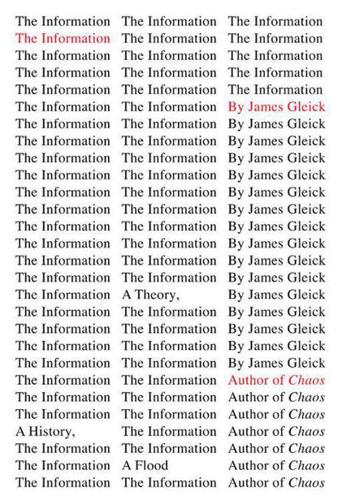
The Information: A History, a Theory, a Flood
by
James Gleick
Published 1 Mar 2011
Oxford: Oxford University Press, 1988. ———. “How to Define Complexity in Physics, and Why.” In Complexity, Entropy, and the Physics of Information, edited by W. H. Zurek. Reading, Mass.: Addison-Wesley, 1990. ———. “Notes on the History of Reversible Computation.” IBM Journal of Research and Development 44 (2000): 270–77. ———. “Notes on Landauer’s Principle, Reversible Computation, and Maxwell’s Demon.” arXiv:physics 0210005 v2 (2003). ———. “Publicity, Privacy, and Permanence of Information.” In Quantum Computing: Back Action 2006, AIP Conference Proceedings 864, edited by Debabrata Goswami. Melville, N.Y.: American Institute of Physics, 2006.
…
♦ “I THINK THE INFORMATION PROBABLY GOES OFF”: Quoted in Tom Siegfried, The Bit and the Pendulum: From Quantum Computing to M Theory—The New Physics of Information (New York: Wiley and Sons, 2000), 203. ♦ “THERE IS NO BABY UNIVERSE”: Stephen Hawking, “Information Loss in Black Holes,” Physical Review D 72 (2005): 4. ♦ THE “THERMODYNAMICS OF COMPUTATION”: Charles H. Bennett, “Notes on the History of Reversible Computation,” IBM Journal of Research and Development 44 (2000): 270. ♦ “COMPUTERS … MAY BE THOUGHT OF AS ENGINES”: Charles H. Bennett, “The Thermodynamics of Computation—a Review,” International Journal of Theoretical Physics 21, no. 12 (1982): 906. ♦ BACK-OF-THE-ENVELOPE CALCULATION: Ibid. ♦ ROLF LANDAUER: “Information Is Physical,” Physics Today 23 (May 1991); “Information Is Inevitably Physical,” in Anthony H.

Singularity Rising: Surviving and Thriving in a Smarter, Richer, and More Dangerous World
by
James D. Miller
Published 14 Jun 2012
Reasons to Believe in the Likely Development of AI through Either a Kurzweil Merger, Clues from the Human Brain, Brain Emulation, or Creating an AI from Scratch: •The human brain exists, showing that it’s possible to create intelligent, flexible entities that can study their own intelligence. •The human brain runs slowly compared to what we think should be possible. As one AI theorist wrote, “Physically speaking, it ought to be possible to run a brain at a million times the speed without shrinking it, cooling it, or invoking reversible computing or quantum computing.”73 •The human brain is being studied by tens of thousands of neuroscientists, many of whom will undoubtedly (and at least for now, mostly unintentionally) provide clues to how to build AIs. •Human-level or better AIs would confer significant benefits on a nation’s military.
…
See also thermonuclear war nuclear weapons, 24, 126 nutritional-supplement regime, 179 O Obama, Barack (President), 73 obsolescence, 144, 147 The Odyssey (Homer), 61 Omohundro, Steve, 25 Overcoming Bias (blog), 138, 207 P Pac-Man video game, 209 parallel processing, 18–19 Parkinson’s disease, 168–69 Pascal, Blaise, 208 patents and copyrights, 143 people, long term—oriented, 80 person, anonymous, 93 pharmaceutical product development, 183 phonetic pattern of language, 91 pirate maps, 184 placebo effect, 110–11 plagues, 36, 45, 78 plastic surgery, 89 Plath, Sylvia, 92 political correctness, 172 Polizzi, Eric, 5 population groups, 75–76, 96, 173 pornography, hard-core, 38, 195 pornography, Internet, 194 post-Singularity civilization, 199–200, 221 goods, 42 operating-system world, 41 pre-Singularity property will have value of, 188 pre-Singularity will be worthless, 187 property rights, 56, 188 race throughout the galaxy, 199 ultra-AI and chess, 132 value, 189 value of education, 192 value of money, 211 Praetorian Guard, 148 pre-Singularity destructive technologies, 201–2 investments, ultra-AI might obliterate the value of, 187 property rights, 56, 187–89 value of money, 211 prisoner-of-war camp, 31 Prisoners’ Dilemma AI development and, 47–53 annihilation of mankind, xix Chinese militaries and, 48–53 drug use and risk of schizophrenia or kidney failure, 160–62 unleaded vs. leaded petrol (gas), 57 US militaries and, 48–53 probe, self-replicating, 199–200 procrastination, 106 production wands, 145 pro-eugenic Chinese, ix prognosticators, 206–7 property owning, 147 property rights economic behavior and, xviii post-Singularity, 56 stable, 82 property rights, pre-Singularity, 187 property rights of bio-humans, 149 Psychology Today, 195 psychotic breakdowns, 120 Q quantum computing, 5, 17 quantum effects, 4 R rabbit population, 142 race, star-faring, 200 racial classifications, 76 racial equality, 173 rapture of the nerds, 208 Rattner, Justin, 35 real estate developer, 181–82 real estate development, 188 recessive condition, inherited, 83 Recursive Darkness (horse), 55, 57 Reed, Leonard, 204–5 religious disagreement, 43 reproductive fitness, 76 reproductive success, 75 resale value, 181 residential housing, 181 The Restaurant at the End of the Universe Adams), 150 retirement savings, 175–76 reverse-engineering biology, 203 reversible computing, 17 Ricardian comparative advantage, 136–37, 143, 188, 190 Ricardian scenario, 189 Ricardo, David, xvii, 135, 143 rich investors, 144–45 Ritalin (cognitive-enhancement drug), xiv, 104–5 Robin. See Hanson, Robin robots, 17, 210 robot soldiers, 24, 53 Roman Empire, 24, 78 Roman Republic, 137–38 Rumsfeld, Donald (former US Secretary of Defense), xviii Russia, 187, 194, 206 S safety-enhancing products, 179 Salamon, Anna, 44 SAT tests, 66, 162–63 savers gamble on the future, 176 Savoca, Elizabeth, 171 Scientific American “Why Women Live Longer,” 179 Scottish Mental Survey (1932), 68 search engines, 167 Second Law of Thermodynamics, 27 seed AI computer program of roughly human-level intelligence capable of improving itself, 36 intelligence explosion, undergoing, 48 that undergoes an intelligence explosion, 36 Self-Aware Systems, 25 sequence F, U, 115 sexbots, 193–95 sex drives, 195 sex-selective abortions, 194 sexually transmitted diseases, 194 Shakespeare, 21 Shaw, George Bernard, 84 Shulman, Carl, 147, 202 Singularitarians, 215 Singularity AI as smart as humans and/or augmenting human intelligence, x AI-centered, 209 AI-induced, 21 bad, avoid making, 58–59 bad Singularity-like event, x being well-educated will not make you materially better off, 192 believers, 27, 208 beyond which human affairs can not continue, xv civilization, xviii disabled children and, 212 emulations, materialized through, 203 enabling of computers, 6 expectations and savings rates, 186–87 expectations raise people’s uncertainty about the quality of the future, 193 expectations should affect when you have children, 193 five undisputed facts about, x–xii by gradual improvement, 178 harm of an unfriendly, 44 hellish, destroys the value of money, 58 humanity will be richer from, 165 intelligence explosion, from an, 203 investments, destroys the value of all, 57 is near, 177, 185, 191, 201, 207 Kurzweil-type, 178 luxuries from, 167 money has no value, 192 money no longer has value, 56 operating-system, 41 pollution as a bad, 56–57 post-Singularity civilization, 199–200, 221 post-Singularity race throughout the galaxy, 199 pre-Singularity destructive technologies, 201–2 pre-Singularity property rights will be respected, 187 pre-Singularity property rights will have value of post-Singularity, 188–89 pre-Singularity value of money, 211 profit opportunities of, 178 property rights and savings, 187–88 rapid political change, would bring about, 187 rich, makes everyone extremely, 192 savings and future wealth, 189 savings and investment returns, 188–89 savings rate, plummeting of, 191–92 savings rates with different Singularity scenarios, 189–90 scarcity, might abolish, 187 signposts of the, 177–78 utopian, 56, 58 utopian, will probably be, 179 as utopian or dystopian, 56 value of money, destroys the, 181 watch list, 209 Singularity conference, 92 Singularity Institute for Artificial Intelligence to create a “seed AI” designed to undergo an intelligence explosion to become a friendly ultra-AI, 14 Michael Vassar as director and former president, 44 Peter Thiel financial backing of, viii Yudkowsky founded, 35–36 The Singularity Is Near (Kurzweil), 3, 207 Singularity materialized through emulations, 203 Singularity movement intelligence explosion is a barrier to entry into, 38 Singularity of a black hole, xviii Singularity University Larry Page founded, x slaveholder compensation, 187 slave labor, 137–38 sleep deprivation, 105, 109, 124, 155.
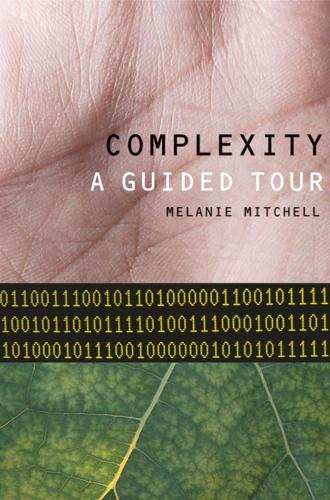
Complexity: A Guided Tour
by
Melanie Mitchell
Published 31 Mar 2009
Fifty years after Szilard’s paper, it was discovered that there were some holes in Szilard’s and Brillouin’s solutions as well. In the 1980s, the mathematician Charles Bennett showed that there are very clever ways to observe and remember information—in the demon’s case, whether an air molecule is fast or slow—without increasing entropy. Bennett’s remarkable demonstration of this formed the basis for reversible computing, which says that, in theory, any computation can be done without expending energy. Bennett’s discoveries might seem to imply that we are back at square one with the demon, since measurement can, in fact, be done without increasing entropy. However, Bennett noted that the second law of thermodynamics was saved again by an earlier discovery made in the 1960s by physicist Rolf Landauer: it is not the act of measurement, but rather the act of erasing memory that necessarily increases entropy.
…
See metabolic pathways payoff matrix, 214–215 Peak, David, 168 Pepper, John, 287 period doubling route to chaos, 34–35 perpetual motion machine, 43 phenotype, 82, 90, 276 of strategy evolved by genetic algorithm, 136 pheromones, 177–181, 183–184, 195 Pierce, John, 55 Pitts, Walter, 296–297 Plato, 77 Poincaré, Henri, 21–22 population genetics, 82 power law definition of, 245 degree distribution of the Web as a, 240–245 on double logarithmic (log-log) plot, 261 in metabolic networks, 249 in metabolic scaling, 260–266 origin of, 252 quarter-power scaling laws as, 262 relationship to fractals, 264–265 skepticism about, 253–255 Zipf’s law as, 270–272 See also scale-free distribution pre-Darwinian notions of evolution, 72–75 preferential attachment, 252–254, 257 as example of common principles in complex systems, 294 Prigogine, Ilya, 298, 303 Principle of Computational Equivalence, 156–158 as example of common principles in complex systems, 294 Prisoner’s dilemma, 213–218 adding social norms to, 218–219 adding spatial structure to, 219–220 payoff matrix for, 214–215 proof by contradiction, 66 pseudo-random number generators, 33, 98, 133, 155, 306 punctuated equilibria (theory of), 85–86, 278 purpose (in complex systems), 184, 296, 301 quantum mechanics, 20, 33, 48, 95 renormalization in, 36 role of observer in, 46 quarter-power scaling laws, 262, 267 skepticism about universality of, 268 quasi-species, 86 Rajan, Vijay, 223 random access memory (RAM), 145–146, 161 random Boolean networks (RBNs), 282–287 attractors in, 285 effect of noise on, 287 global state of, 285 as models of genetic regulatory networks, 284, 287 regimes of behavior in, 284 random genetic drift, 82–83 randomness in ant colonies, 177 in biological metabolism, 178 complexity as mixture of order and, 98, 102, 156 in Copycat, 198, 207–208 from deterministic chaos, 33, 38, 300 as essential in adaptive information processing, 181–184, 195–196, 295, 300 evolutionary role of, 77–78, 83 in historical contingency, 85 in immune system, 174 random number generators, 33, 98, 133, 155, 306 Rapoport, Anatol, 217, 297 receptors (on lymphocytes), 8, 173–176, 181, 183 recessive allele, 80–82 recombination, 81, 83, 89, 101 in genetic algorithms, 129 reductionism, ix–x linearity, nonlinearity, and, 23 regular network, 236–239 average path length of, 318 regulatory T cells, 176 renormalization, 36, 38 reversibility, 43 reversible computing, 46–47 ribonucleic acid. See RNA ribosomes, 91–93, 122, 274 RNA, 86, 89–93, 122, 274–276 in genetic regulation, 278–279 noncoding, 276, 279 RNA editing, 275 RNA polymerase, 90 Robby the robot, 130–142 Rosenfield, Israel, 181 Rothman, Tony, 43 Rubner, Max, 258, 260, 266, 268 rule 110 cellular automaton, 153–157 rule 30 cellular automaton, 154–156 rules, cellular automata, 147–149 Santa Fe Institute, x, xi, 94, 156, 160, 164, 254, 264, 282, 291 Complex Systems Summer School, 94, 300 Savage, Leonard, 297 scale-free distribution, 240–245 versus bell-curve distribution, 243–245 See also power-law distribution scale-free networks, 239–240 degree distribution of, 240–245 (see also power-law distribution) examples of, 247–252 origin of, 252–254, 257 resilience in, 245–246 skepticism about, 253–255 scaling, 258–264.

Superintelligence: Paths, Dangers, Strategies
by
Nick Bostrom
Published 3 Jun 2014
If we require irreversible computations, and assume a nanomechanical implementation of the “computronium” (which would allow us to push close to the Landauer limit of energy efficiency), a computer system driven by a Dyson sphere could generate some 1047 operations per second.22 Combining these estimates with our earlier estimate of the number of stars that could be colonized, we get a number of about 1067 ops/s once the accessible parts of the universe have been colonized (assuming nanomechanical computronium).23 A typical star maintains its luminosity for some 1018 s. Consequently, the number of computational operations that could be performed using our cosmic endowment is at least 1085. The true number is probably much larger. We might get additional orders of magnitude, for example, if we make extensive use of reversible computation, if we perform the computations at colder temperatures (by waiting until the universe has cooled further), or if we make use of additional sources of energy (such as dark matter).24 It might not be immediately obvious to some readers why the ability to perform 1085 computational operations is a big deal.
…
Bostrom [2006b]; Bostrom and Yudkowsky [forthcoming].) 19. There will be a trade-off between total parallel computing power and computational speed, as the highest computational speeds will be attainable only at the expense of a reduction in power efficiency. This will be especially true after one enters the era of reversible computing. 20. An emulation could be tested by leading it into temptation. By repeatedly testing how an emulation started from a certain prepared state reacts to various sequences of stimuli, one could obtain high confidence in the reliability of that emulation. But the further the mental state is subsequently allowed to develop away from its validated starting point, the less certain one could be that it would remain reliable.

Deep Utopia: Life and Meaning in a Solved World
by
Nick Bostrom
Published 26 Mar 2024
A typical star maintains its luminosity for some 1018 s. Consequently, the number of computational operations that could be performed using our cosmic endowment is at least 1085. The true number is probably much larger. We might get additional orders of magnitude, for example, if we make extensive use of reversible computation, if we perform the computations at colder temperatures (by waiting until the universe has cooled further), or if we make use of additional sources of energy (such as dark matter). It might not be immediately obvious to some readers why the ability to perform 1085 computational operations is a big deal.
…
For example, if we speed ourselves up by a factor of three million or so, we would be back to a brain that could fit inside our current cranium, although it could still have orders of magnitude more long-term memory than present-day brains, due to the use of more optimal computing and memory substrates. (Such a high-speed mind would also need a powerful active cooling system, unless implemented almost entirely using reversible computation.) Instead of optimizing for living as long as possible with our current minds, we may instead prefer to make the cross-sections of our mental life bigger and more complex. Each second of subjective life would then require a greater quantity of computation, and the memories of such expanded minds would also use up more storage capacity.
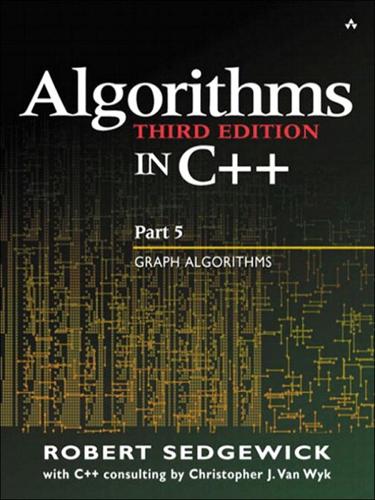
Algorithms in C++ Part 5: Graph Algorithms
by
Robert Sedgewick
Published 2 Jan 1992
The trees in the DFS forest that results from this process define the strong components: All vertices in each tree have the same value in the vertex-indexed id vector (bottom). Kosaraju’s method is simple to explain and implement. To find the strong components of a graph, first run DFS on its reverse, computing the permutation of vertices defined by the postorder numbering. (This process constitutes a topological sort if the digraph is a DAG.) Then, run DFS again on the graph, but to find the next vertex to search (when calling the recursive search function, both at the outset and each time that the recursive search function returns to the top-level search function), use the unvisited vertex with the highest postorder number.
…
• 19.121 Describe what happens when you use Kosaraju’s algorithm to find the strong components of a digraph that consists of a single cycle. •• 19.122 Can we avoid computing the reverse of the digraph in the adjacency-lists version of Kosaraju’s method (Program 19.10) by using one of the three techniques mentioned in Section 19.4 for avoiding the reverse computation when doing a topological sort? For each technique, give either a proof that it works or a counterexample that shows that it does not work. • 19.123 Show, in the style of Figure 19.28, the DFS forests and the contents of the auxiliary vertex-indexed vectors that result when you use Kosaraju’s algorithm to compute the strong components of the reverse of the digraph in Figure 19.5.
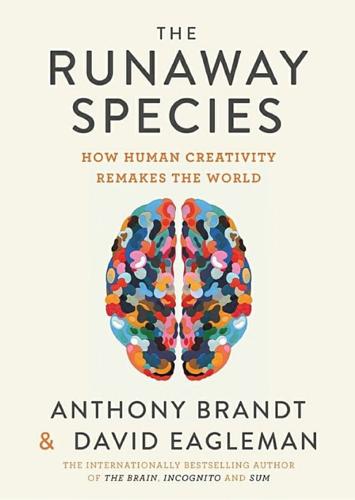
The Runaway Species: How Human Creativity Remakes the World
by
David Eagleman
and
Anthony Brandt
Published 30 Sep 2017
Leonardo Da Vinci: Experience, Experiment and Design. Princeton: Princeton University Press, 2006. Kennedy, Pagan. Inventology: How We Dream Up Things That Change the World. New York: Houghton Mifflin Harcourt, 2016. Kerntopf, Paweł, Radomir Stanković, Alexis De Vos, and Jaakko Astola. “Early Pioneers in Reversible Computation.” Japan: Research Group on Multiple-Valued Logic, 2014. Accessed August 21, 2014. <http://cela.ugent.be/catalog/pug01:4400338> Keynes, John Maynard. “Economic Possibilities for Our Grandchildren.” In Essays in Persuasion. New York: Norton, 1963. Kim, Kyung Hee. “The Creativity Crisis: The Decrease in Creative Thinking Scores on the Torrance Tests of Creative Thinking.”

The Transhumanist Reader
by
Max More
and
Natasha Vita-More
Published 4 Mar 2013
As someone who was used to the size and speed constraints of electronics, I was in my glory with this new medium. I went wild, adding functionality, pipelining, multicomputing, the works. I could build a supercomputer beyond the wildest dreams of Cray, the size of a bacterium! What I didn’t do was pay any attention to “this crazy reversible computing stuff.” Until I did the heat dissipation calculations. The problem is that there really is a fundamental physical limit involved in computation, but it represents an amount of energy so small (it’s comparable to the thermal energy of one atom) that it is totally negligible in existing physical devices.
…
We can still use those functions reversibly; the only trick needed is not to erase the inputs! Ultimately, of course, you have to get rid of the input in order to process the next one; but you can always erase the output without entropic cost if you’ve saved the input. This leads to structures in reversible computation called “retractile cascades.” Each of a series of (logical) circuits computes a function of the output of its predecessor. If the final output is erased first, and then the next-to-last, and so forth, the entire operation is reversible, and can be done (in theory!) without any energy dissipation.
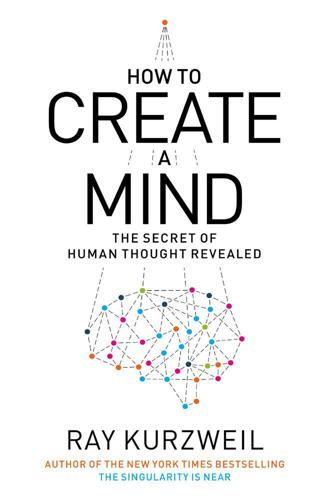
How to Create a Mind: The Secret of Human Thought Revealed
by
Ray Kurzweil
Published 13 Nov 2012
[Note: Anders Sandberg, “The Physics of the Information Processing Superobjects: Daily Life Among the Jupiter Brains,” Journal of Evolution and Technology 5 (December 22, 1999), http://www.transhumanist.com/volume5/Brains2.pdf.] As discussed above, 1042 calculations per second could be achieved without producing significant heat. By fully deploying reversible computing techniques, using designs that generate low levels of errors, and allowing for reasonable amounts of energy dissipation, we should end up somewhere between 1042 and 1050 calculations per second. The design terrain between these two limits is complex. Examining the technical issues that arise as we advance from 1042 to 1050 is beyond the scope of this chapter.
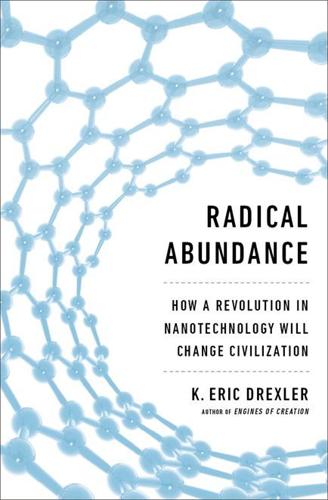
Radical Abundance: How a Revolution in Nanotechnology Will Change Civilization
by
K. Eric Drexler
Published 6 May 2013
Unlike shrinking the devices themselves, stacking layers isn’t a recipe for exponential improvements. 226from milliwatts to nanowatts: Through technologies that operate substantially closer to (yet still short of) the ultimate thermodynamic limits for digital computation (C. H. Bennett, “Notes on the History of Reversible Computation,” IBM Journal of Research and Development 32 [1988]: 16–23). 229ten-fold reductions in vehicle mass: As a consequence of improvements in the strength of practical structural materials (discussed in Chapter 11). 229a doubling of typical engine efficiencies: See the discussion of chemical energy conversion in Chapter 11 and its notes; automobile and truck engines today are substantially less than 50 percent efficient. 230coal-fired power plants (2,300 today): International Energy Agency Clean Coal Centre, http://www.iea-coal.org.uk/site/2010/database-section/coal-power (retrieved December 2012). 230By enabling abundant elements . . . to substitute for scarcer materials: Chapter 11 (and notes) describe some of the main aspects of this materials-substitution opportunity. 231Atomically precise fabrication can produce membranes: For example, short carbon nanotubes and nanoporous graphene provide models for flow pathways through low-resistance membranes (e.g., D.

Accelerando
by
Stross, Charles
Published 22 Jan 2005
Traditional optics are long since obsolete – tunable matter can slow photons to a stop, teleport them here to there, play ping-pong with spin and polarization – and besides, the dumb matter in the walls and floor has been replaced by low-power computronium, heat sinks dangling far below the floor of the lily-pad habitat to dispose of the scanty waste photons from reversible computation. Now the room is empty. "Since I became curator here, I've turned the museum's structural supports into a dedicated high-density memory store. One of the fringe benefits of a supervisory post, of course. I have about a billion avabits of capacity, enough to archive the combined sensory bandwidth and memories of the entire population of twentieth-century Earth – if that was what interested me."
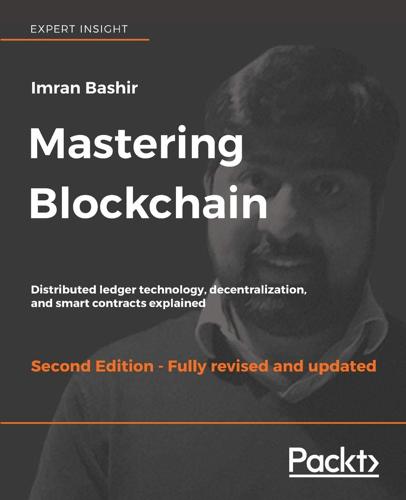
Mastering Blockchain, Second Edition
by
Imran Bashir
Published 28 Mar 2018
In the following section, security properties of hash functions are discussed. Preimage resistance This property can be explained by using the simple equation shown as follows: h(x) = y Here, h is the hash function, x is the input, and y is the hash. The first security property requires that y cannot be reverse-computed to x. x is considered a preimage of y, hence the name preimage resistance. This is also called a one-way property. Second preimage resistance The second preimage resistance property requires that given x and h(x), it is almost impossible to find any other message m, where m != x and hash of m = hash of x or h(m) = h(x).
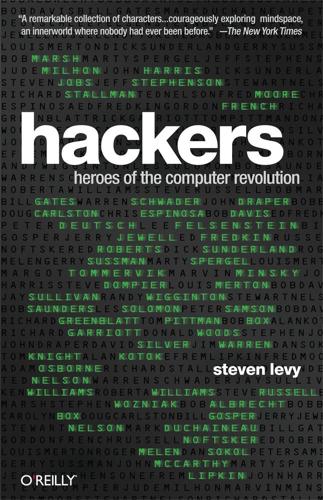
Hackers: Heroes of the Computer Revolution - 25th Anniversary Edition
by
Steven Levy
Published 18 May 2010
Amazingly, a few of these programmers, grad students working with McCarthy, had even written a program that utilized one of the rows of tiny lights: the lights would be lit in such an order that it looked like a little ball was being passed from right to left: if an operator hit a switch at just the right time, the motion of the lights could be reversed—computer Ping-Pong! This obviously was the kind of thing that you’d show off to impress your peers, who would then take a look at the actual program you had written to see how it was done. To top the program, someone else might try to do the same thing with fewer instructions—a worthy endeavor, since there was so little room in the small “memory” of the computers of those days that not many instructions could fit into them.

Rationality: From AI to Zombies
by
Eliezer Yudkowsky
Published 11 Mar 2015
(It is sometimes said that it is erasing bits in order to prepare for the next observation that takes the thermodynamic work—but that distinction is just a matter of words and perspective; the math is unambiguous.) (Discovering logical “truths” is a complication which I will not, for now, consider—at least in part because I am still thinking through the exact formalism myself. In thermodynamics, knowledge of logical truths does not count as negentropy; as would be expected, since a reversible computer can compute logical truths at arbitrarily low cost. All this that I have said is true of the logically omniscient: any lesser mind will necessarily be less efficient.) “Forming accurate beliefs requires a corresponding amount of evidence” is a very cogent truth both in human relations and in thermodynamics: if blind faith actually worked as a method of investigation, you could turn warm water into electricity and ice cubes.